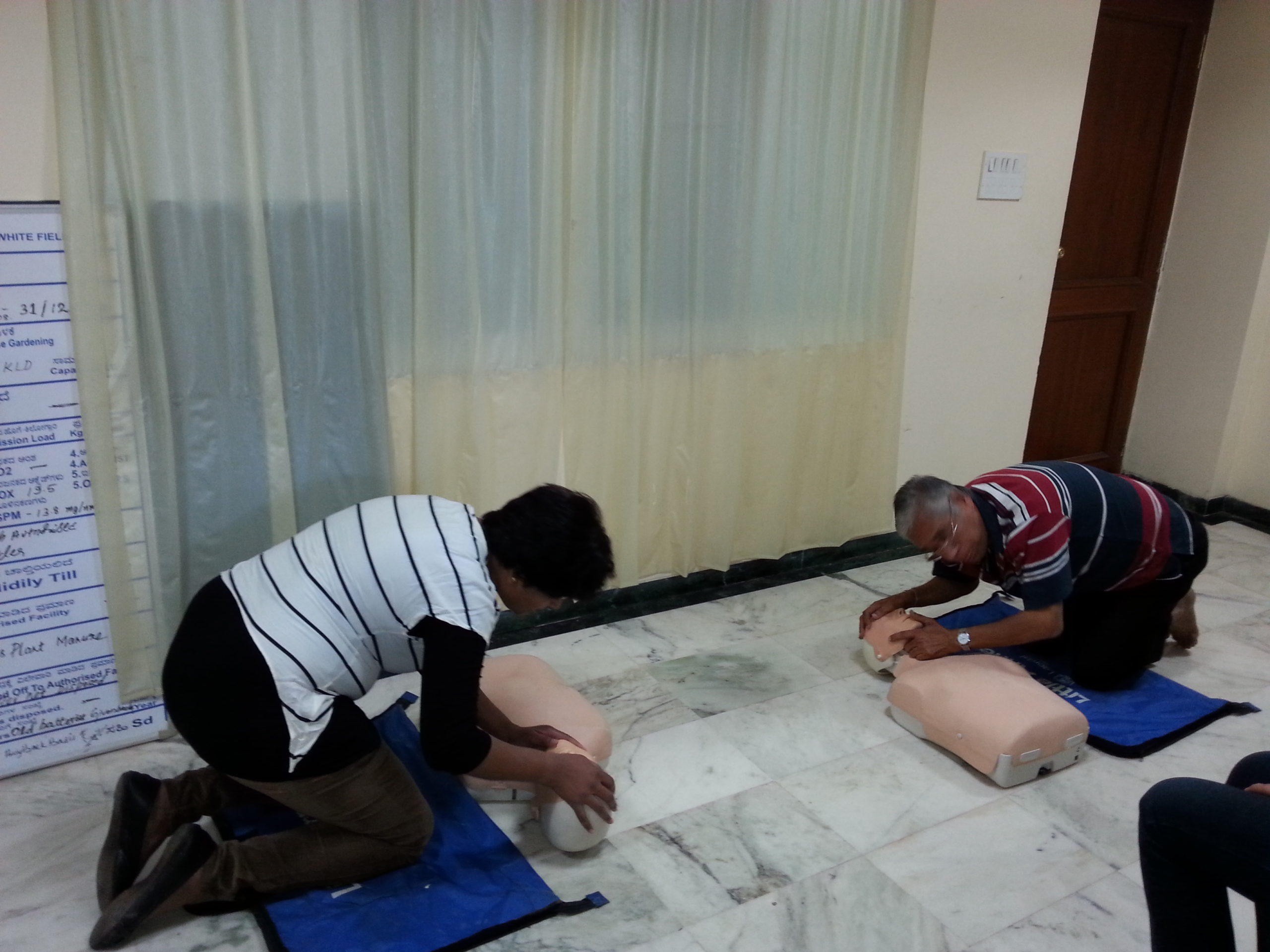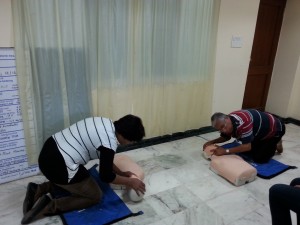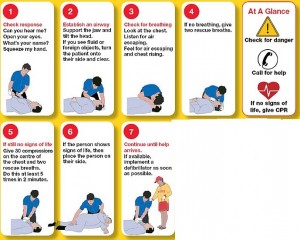CPR : A skill for life

You don’t need to be a doctor to perform this life saving technique.
Paula McLean, a Whitefield resident spent time this Sunday morning with 10 keen learners to train `Hands Only’ CPR technique. The session was concise, informativ
e, practical and hands on. Many such sessions are being planned for the benefit of residents.
What is CPR
Before we learn this technique, it is important to know what sudden cardiac arrest is. Sudden cardiac arrest occurs when the electrical conducting system of the heart fails and the heart beats irregularly and very fast, more than 1000 times, technically called as ventricular fibrillation. The heart suddenly stops beating. The blood flow to the brain stops. As a result, the person becomes unconscious and stops normal breathing. A cardiac arrest is not the same as a heart attack, but it may be caused by a heart attack.
acting promptly can save their life. The best approach is to give electric shock by an automated external defibrillator (AED) if available. If not, then try thumping in the centre of chest from a distance of 1 foot.

In most cases, sudden cardiac arrest may be reversible in the first 10 minutes. The brain remains alive during this period even though the heart and respiration have stopped. This is called clinical death.
Continuous compression only CPR compresses the heart between the sternum and the back bone and builds up the pressure that keeps the oxygenated blood flowing to the brain and keeps the person alive until a defibrillator becomes available or expert medical help is at hand. Therefore, if you see someone collapse from sudden cardiac arrest,
Technique
Let us now learn the correct technique of performing continuous compression CPR step by step (DRS ABC)
D is to Check for Danger
R is to Check for Responsiveness
S is to Shout for help – ask a bystander to dial 108/ call an ambulance
A is to Open Airway
B is to Check for Breathing – if not breathing, start CPR.
C is for CPR
- Check for responsiveness by shaking and shouting at the person.
- Then begin chest compressions. Kneel down by the side of the person in front of the chest.
- Put the heel of your hand in the center of the chest on the sternum. Center of the chest means a line drawn between the nipples.
- Put the heel of your other hand on top and interlock.
- Keep your elbows straight and bring your shoulders directly over the centre of the chest. Then compress the chest up to 5 cm.
- Do not remove your hands. Allow the chest to return to the normal position before you push down again.
- Continue to push hard and fast, until expert medical help is available and/or electric shock machine is available. Stop only if the patient speaks, moves, or breathes normally.
- Remember to push hard (compress 5 cm with each down stroke) and push fast (100 per minute) at the center of the chest.
Don’t worry … this pumping action will not hurt the victim. Chest compression should be done continuously and without interruptions. Do not stop to check for a pulse, clear the airway or do mouth to mouth breathing It is important to act quickly… every minute lost reduces the chances of revival by 10% … So, if you wait 5 minutes, the chances of surviving are 50% less. The earlier you give CPR to a person in cardiac arrest, the greater the chance of a successful resuscitation. Persons with cardiac arrest are more than five times more likely to survive if CPR is attempted while the patient is still gasping. Studies show that continuous chest compression CPR is more effective and can save more lives than traditional CPR. This is because continuous compression only CPR can be done by trained as well as untrained bystanders.
To organize in your neighborhood please write to medical@whitefieldrising.org
About Paula
Paula is an advanced life support instructor and qualified nurse from the UK with 25 years experience in teaching CPR. She has been a member of a cardiac arrest team attending more than a 1000 emergency calls both in hospital and in the community.

Thank you for these explanations and devotion for to save other’s lives. I guess automatism is the key, so I’ll check for to be trained.